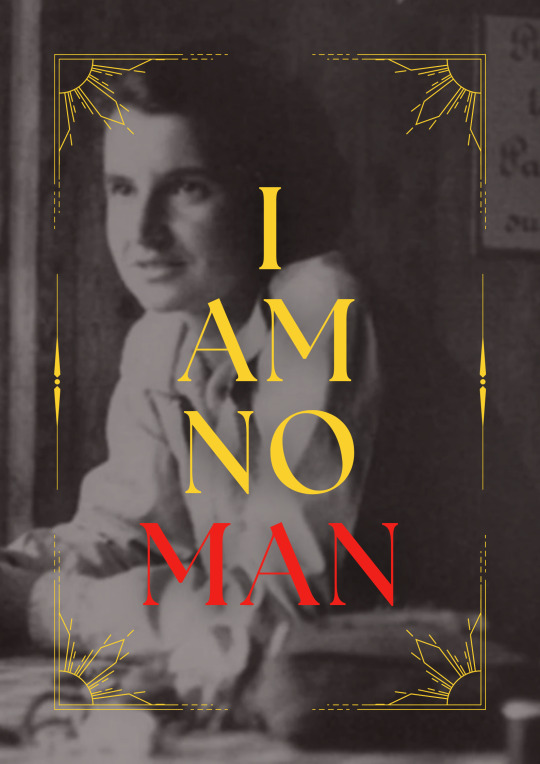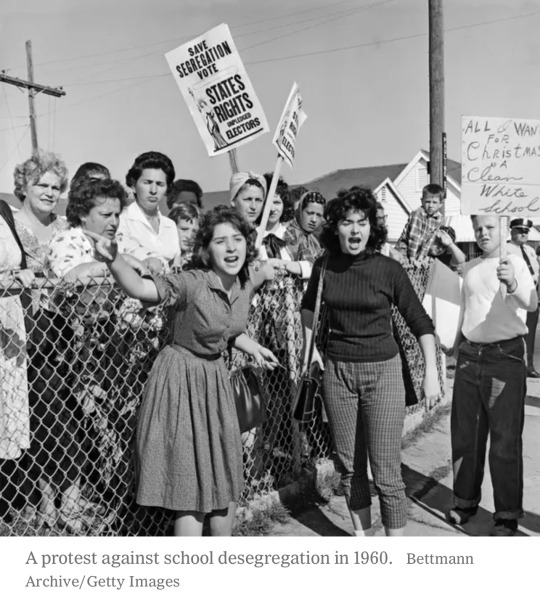#franklin properties
Text
#Homes For Sale In Franklin Tennessee#Houses For Sale In Franklin Tennessee#Real Estate In Franklin TN#franklinrealestate#Franklin homes for sale#real estate market#franklin tn real estate agent#properties in franklin tn#franklin properties#franklinrealtor#nashvillerealtor#franklin#realestate#franklintn#murfreesbororealtor#brentwoodrealestate#brentwoodrealtor#tennessee#mortgageloanoriginator#realtor#nashvillemortgage#brokersarebetter#lebanonrealestate#murfreesbororealestate#realestatemurfreesboro#mtjulietrealestate#realestatelebanon#nashvillerealtors#tennesseerealtor#nashvillerealestate
1 note
·
View note
Text

This plaque marks the scientific achievement of Rosalind Franklin, misspelled as Francis Crick and James Watson.
#rosalind franklin#feminism#women in science#breakthroughs in science#Rosalind Franklin discovered genetic properties of dna#give credit#stop men from taking credit for women’s work#women run the world
67 notes
·
View notes
Text

LMFAOOOOOOOOOOOOOOOOOO
2 notes
·
View notes
Text
Kevin D. Houser- Ameriprise Financial Broker-Discloses Customer Disputes Involving Franklin Square BDC, Cole Credit Property Trust IV and CIM REIT- Allen Town, PA
Kevin D. Houser Investigation
June 2023- Allen Town, PA
The FINRA records of Kevin D. Houser , a stockbroker employed by Ameriprise Financial Services, disclose several customer disputes .
The Financial Industry Regulatory Authority (FINRA) is the agency that licenses and regulates stockbrokers and brokerage firms. FINRA requires brokers and brokerage firms to report customer complaints and…
View On WordPress
#ameriprise financial#ameriprise financial investigation#CIM REIT#Cole Credit Property Trust IV#Franklin Square BDC#Kevin D. Houser#Kevin D. Houser Investigation#lpl financial#lpl financial problem#recover investment losses#securities attorney#stockbroker malpractice#stockbroker negligence
0 notes
Video
youtube
Kirk Franklin & God's Property - Meledy
0 notes
Text
youtube
0 notes
Photo



What a wonderful 1895 home in Salem, Ohio. It has 4bd. 3ba. and $349K.


Check out this entrance hall. Isn’t it amazing? The wood is gorgeous- 2 sets of double pocket doors.

Whoever’s chair this is in front of the fireplace has the right idea.

You can’t see it that well in this photo, but the cracks in the plaster wall are visible thru the wallpaper.


What a lovely dining room. Love the wallpaper and fireplace.


The kitchen is minimally reno’d. Those cabinets have to be original. Love it.

Isn’t this amazing? Look at those cabinets.

Nice big family room with a beautiful fireplace.

The sunporch is stunning. Notice how old the floors are.

Going up the stairs- very nice. I would have to lose the carpet, though.


What a huge main bd. and look at the beautiful French wood stove.


The bds. in this house are all very large. Love the fireplace in the blue room.

What a great vintage bath. Even the bathrooms are large.


Look at this- a huge rec. room. This home is amazing. I wonder what’s under that suspended ceiling, though.

It even has a bar- there could be some great parties in here.


Isn’t this cute? A real place to party.

Stairs that come up from the rec. room- just watch that door, the first step is a long way down.

Cheery playroom.

This looks like a home office. I think that this is what they’re referring to when they say that there’s a coachman’s room.

Long driveway to the property.

A smaller back porch.

There’s a circular driveway, and a 2 car garage on .68 acre of land. What a charming home.
https://www.zillow.com/homedetails/914-Franklin-Ave-Salem-OH-44460/33270581_zpid/
1K notes
·
View notes
Text









Throughout history, women have left an undeniable impact on society with their hard work, creativity, and dedication to progress. Unfortunately, their accomplishments have often gone unnoticed, been undervalued, or even stolen. Despite these challenges, brave women of today continue to push boundaries, break barriers, and pave the way for a more fair and equal world. It's our duty to keep going, so that future generations of women can inherit a kinder, more just, and supportive world. By following in the footsteps of the incredible women who came before us, we can create a world where every woman can flourish and succeed, and where their contributions are recognized and celebrated.
Joan of Arc is a patron saint of France, honored as a defender of the French nation for her role in the siege of Orléans and her insistence on the coronation of Charles VII of France during the Hundred Years' War. Claiming to be acting under divine guidance, she became a military leader who transcended gender roles and gained recognition as a savior of France. She was put on trial by Bishop Pierre Cauchon on accusations of heresy, which included blaspheming by wearing men's clothes, acting upon visions that were demonic, and refusing to submit her words and deeds to the judgment of the church. She was declared guilty and burned at the stake on 30 May 1431, aged about nineteen.
Rani Lakshmibai was the Maharani consort of the princely state of Jhansi from 1843 to 1853. She was one of the leading figures in the Indian Rebellion of 1857 became a symbol of resistance to the British rule in India for Indian nationalists. When the Maharaja died in 1853, the British East India Company under Governor-General Lord Dalhousie refused to recognize the claim of his adpoted heir and annexed Jhansi under the Doctrine of Lapse. She rode into battle with her infant son strapped to her back, and died in June 1858 after being mortally wounded during the British counterattack at Gwalior.
Rosalind Franklin was a British chemist and X-ray crystallographer whose work was instrumental in the discovery of the structure of DNA. Her contributions were largely overlooked by her male colleagues, James Watson and Francis Crick, who used her data without her permission or acknowledgement. This theft of her intellectual property and erasure of her contributions is a prime example of the systemic sexism that has historically plagued the scientific community.
Hedy Lamarr was an Austrian-American actress and inventor who co-invented a frequency-hopping spread spectrum technology during World War II that was used to guide torpedoes. However, her contributions were largely ignored and dismissed by male engineers and the military at the time. It was only later in life that she received recognition for her scientific achievements.
Emma Weyant is an American competitive swimmer. She was the US national champion at the individual medley. She qualified for the 2020 Olympic Games in the 400m individual medley and won the silver medal in this event. Weyant finished second in the 500-yard freestyle at the 2022 NCAA Division I Women's Swimming and Diving Championships. She was beaten by William (Lia) Thomas, a fetishist, who when competing as a member of the Penn men's team, which was 2018-19, ranked 554th in the 200 freestyle, 65th in the 500 freestyle and 32nd in the 1650 freestyle. Weyant is the fastest swimmer in the 500-yard freestyle and had her position stolen by a man.
Maryna Viazovska is a Ukrainian mathematician who made a breakthrough in sphere packing, solving the centuries-old mathematical problem known as the densest packing of spheres in dimensions 8 and 24. She was awarded the Fields Medal in July 2022, making her the second woman (after Maryam Mirzakhani), the second person born in the Ukrainian SSR and the first with a degree from a Ukrainian university to ever receive it.
Hannie Schaft was a Dutch resistance fighter during World War II who played a crucial role in the resistance movement against Nazi occupation. Schaft was a former university student who dropped out because she refused to sign a pledge of loyalty to Germany. Nazis arrested and killed her in 1945, just three weeks before the war ended in Europe. According to lore, Schaft’s last words were, “I’m a better shot,” after initially only being wounded by her executioner.
Shakuntala Devi was an Indian mathematician and mental calculator who was known as the "Human Computer" for her exceptional ability to perform complex mathematical calculations in her head. Her extraordinary abilities earned her a place in the 1982 Guinness Book of Records. Her lesser known achievement is that in 1977 she wrote what is considered to be the first book in India on homosexuality titled “The World of Homosexuals.”
J. K. Rowling is a British author and philanthropist. She wrote Harry Potter, a seven-volume children's fantasy series published from 1997 to 2007. Known for her philanthropy, she was doxxed and harassed after coming out with support for women's and gay rights in 2020. Rowling secretly donated hundreds of thousands of pounds to save 100 female lawyers and their families facing murder in Afghanistan. In 2022, she funded a women's only rape shelter in Edinburgh.
#this post was inspired by me being absolutely sick of trans activists claiming that joan of arc/rani lakshmibai/insert literally any other#strong woman#is actually a trans man#they were no man at all#women have been brave and strong and amazing throughout history#and they still are#if only you'd get your head out of your ass to take a look#radical feminism#radblr#terf#trans#misogny#i am no man
685 notes
·
View notes
Text
It was nothing that the local EMS and fire departments couldn't handle. What rankled them was that they were providing their services for free. The deal negotiated by Amazon and the state had freed the company from paying local property taxes - the taxes that paid for the functions of local government, from schools to the police and fire departments - for fifteen years. The warehouses were in Licking and Franklin Counties, but they weren't really of them. They put many hundreds of cars and trucks onto local roads every day, and they put out emergency calls, but Amazon paid for neither snow plows nor ambulances. The basic social compact applied to others but not to them; in 2017, voters in the area served by West Licking Fire Station 3 would be asked to approve a 5-year, 6.5 million property tax levy to keep the fire department going. They would be making up what the company withheld.
-Fulfillment: Winning and Losing in One-Click America, by Alec MacGillis
771 notes
·
View notes
Text
0 notes
Text
Today is #RainsfordDay! Ms. Codex 1669 is a collection of works primarily focused on spirits and their sigils that includes numerous tables, drawings, and diagrams of magical symbols and their properties. Written in France, 18th century.
🔗:
#18th century#manuscript#paper#occult#spirits#sigils#france#magic#book history#rainsford day#rare books
209 notes
·
View notes
Text
Based off a post I saw with the idea that Robert Smirke had fourteen friends, each falling too/representing a different entity, with Smirke himself being the Extinction.
To get the obvious ones out of the way: Jonah Magnus as the Eye, Mordechai Lukas as the Lonely, Maxwell Rayner as the Dark, and George Gilbert Scott as the Buried; these ones are all canon. Not directly canon but a pretty reasonable assumption is Simon Fairchild as the Vast; we know Simon had Maxwell Rayner help him with his Awful Deep ritual in 1853, which was only a few years before Smirke died, and Smirke hung out with Rayner a ton, so it makes sense for Simon to be part of the group (though by a different name; he only started going by “Simon Fairchild” in the 1930s). Another fairly reasonable assumption, in my opinion, is John Franklin for the Hunt. Franklin is canonically a Hunt avatar in The Magnus Archives, his real-life timeline overlaps with Smirke and the rest, and Rayner was canonically interested in his expedition, which was probably because he wanted to use Franklin’s knowledge of arctic exploration for his ritual, but could also imply they knew each other, and therefore, Smirke’s gang.
For the Corruption, my first thought was John Amherst, but he only became an avatar during the Second Boer War, which was about half a century after Smirke’s time. Instead, John Snow is a better fit. He was an English physician who lived during the same time as Smirke, and he had something going on; his descendant Neil Thompson has a syringe that belonged to Snow that had Corruption properties, so Snow fits. For the Slaughter, we could go with Charles Fleming. We know he was in China from at least the beginning of the First Opium War in 1839, and Smirke and Jonah and the rest were up and active on their supernatural studies since at least the 1810s, so it’s theoretical Fleming could have hung out with them, even though he didn’t become touched by the Slaughter until he went to China. Maybe he came back later, though he was in China at least until 1862. Alternatively, William Hall, the actual captain of the Nemesis, could be an option, his lifetime overlaps pretty well with Smirke’s, though there is no evidence he interacted with the Slaughter besides his interactions with Fleming and the Nemesis. Still, he was probably a bit more high-society that Fleming, so I kind of prefer him. Finally, for the more reasonable ones, we have Joey Grimaldi for the Stranger. Grimaldi’s timeline overlaps with Smirke’s, and we know he was affected by the Stranger even before he was turned into Nikola Orsinov. The reason I’m choosing Grimaldi instead of Gregor Orsinov or Nikolai Denikin is that we know for sure he was in England while Smirke was, unlike the other two.
Now for the more out-there guesses. For the Flesh, there are a few options. One is Eustace Wick, the Lutheran priest-turned-cannibal, who did live at the same time as Smirke, but he became an avatar in 1832, died in 1845, and has no evidence that he’d even been to England, considering he’s American. The other options would be Benjamin Carlisle, Benjamin’s unnamed wife, or possibly some other relative or descendant of theirs. I find this one the more likely choice, because Jonathan Sims specifically wonders how Benjamin Carlisle’s wife was able to give her statement to the Magnus Institute, considering she starved to death in a cave on the Oregon Trail in 1845, as well as the fact that an apparent descendant of her, Toby Carlisle, is living in England by the 21st Century and has enough of a connection with the Flesh to be pretty severely affected by the failure of the Last Feast ritual. The unnamed Mrs. Carlisle being the Flesh representative does mean she presumably gave in and cannibalized her husband, and the timeline only gives her about a decade to have hung out with the rest before Smirke’s death, but I think that fits, considering what Smirke said about just coming up with theories about the Flesh in his statement.
The Spiral has similarly not a lot to go on. I would just say the Distortion, seeing as it’s an immortal manifestation of the Spiral itself. We know that Ivo Lenshik’s father was tormented by the Distortion in a human form, and apparently Lenshik’s great-uncle did too, implying that the Distortion did assume a humanoid form sometimes, before it was forced to by the failure of the Great Twisting ritual. Plus, Jonah Magnus clearly knows who the Distortion is, which yes, he could have learned at literally any point from the past two hundred years, but seeing as we’ve got nothing else, I’ll choose to believe. For the Web, the only older avatars of the Web we’re aware of would be the historical owners of the house at Hill Top Road. We don’t know who owned it during Smirke’s time; the closest we have are the unnamed blackmailer who died during the English Civil War in the mid-1600s, and Walter Fielding, who died in 1923. Walter’s son and grandson both owned the house for about thirty years before dying, so with the same amount of time applied, Walter couldn’t be our Web avatar. Honestly, the answer might just have to be “whichever Web avatar was owning the house at Hill Top Road during the first half of the 19th Century.”
For the Desolation, we have even less. Diego Molina founded the Cult of the Lightless Flame at some point prior to World War II, but we have no idea when, and it couldn’t have been that long, considering what Eugene Vanderstock says about the immortality of Desolation avatars having some kind of limit. The same is true of the End. The only known End avatar who was alive during Smirke’s time was Nathaniel Thorp, who was a Death at the time, and didn’t become human again until 1970. It’s unlikely that Deaths got breaks to socialize.
So, in summary, we know for sure about:
* Jonah Magnus — The Eye
* Mordechai Lukas — The Lonely
* Maxwell Rayner — The Dark
* George Gilbert Scott — The Buried
We can make some reasonable assumptions about:
* Simon Fairchild — The Vast
* John Franklin — The Hunt
We can make educated guesses about:
* John Snow — The Corruption
* William Hall — The Slaughter
* Joey Grimaldi — The Stranger
We can make complete guesses about:
* Mrs. Carlisle — The Flesh
* The Distortion — The Spiral
* Owner of the house at Hill Top Road — The Web
And we have nothing for:
* The Desolation
* The End
If anyone has ideas or things I missed, let me know.
#tma#tmagp#the magnus archives#magpod#robert smirke#smirke's fourteen#jonah magnus#simon fairchild#maxwell rayner
76 notes
·
View notes
Text
The Supreme Court is trying to drag America backwards to “Separate but Equal”


President Andrew Johnson vetoed the nation’s inaugural Civil Rights legislation because, in his view, it discriminated against white people and privileged Black people. The Civil Rights Act of 1866 (which Congress enacted over the veto) bestowed citizenship upon all persons — except for certain American Indians — born in the United States and endowed all persons with the same rights as white people in terms of issuing contracts, owning property, suing or being sued or serving as witnesses. This law was proposed because the Supreme Court had ruled in Dred Scott v. Sanford that African Americans, free or enslaved, were ineligible as a matter of race for federal citizenship, and because many states had barred African Americans from enjoying even the most rudimentary civil rights.
Johnson vetoed the act in part because the citizenship provision would immediately make citizens of native-born Black people while European-born immigrants had to wait several years to qualify for citizenship via naturalization (which was then open only to white people). According to Johnson, this amounted to “a discrimination against large numbers of intelligent, worthy and patriotic foreigners, and in favor of the Negro, to whom, after long years of bondage, the avenues to freedom and intelligence have just now been suddenly opened.” Johnson similarly opposed the provision in the act affording federal protection to civil rights, charging that it made possible “discriminating protection to colored persons.”
A key defect of the Civil Rights Act, according to Johnson, was that it established “for the security of the colored race safeguards which go infinitely beyond any that the general government has ever provided for the white race. In fact, the distinction of race and color is by the bill made to operate in favor of the colored and against the white race.” Johnson opposed as well the 14th Amendment, which decreed that states offer to all persons equal protection of the laws, a provision which he also saw as a wrongful venture in racial favoritism aimed at assisting the undeserving Negro.
In 1875, Congress enacted legislation that prohibited racial discrimination in the provision of public accommodations. Eight years later, in a judgment invalidating that provision, the Supreme Court disapprovingly lectured the Black plaintiffs, declaring that “when a man has emerged from slavery, and by the aid of beneficent legislation has shaken off the inseparable concomitants of that state, there must be some stage in the progress of his elevation when he takes the rank of a mere citizen and ceases to be the special favorite of the laws.”
In 1941, President Franklin D. Roosevelt promulgated Executive Order 8802, which prohibited racial discrimination in the employment of workers in defense industries and established the Fair Employment Practices Commission to carry out the order. Assailing the order, Representative Jamie Whitten, a Mississippi segregationist, complained that it would not so much prevent unfairness as “discriminate in favor of the Negro” — this at a time when anti-Black discrimination across the social landscape was blatant, rife and to a large extent, fully lawful.
Segregationist Southerners were not the only ones who railed against antidiscrimination laws on the grounds that they constituted illegitimate preferences for African Americans. In 1945, the New York City administrator Robert Moses inveighed against pioneering municipal antidiscrimination legislation in employment and college admissions. Displaying more anger at the distant prospect of racial quotas than the immediate reality of racial exclusions, Moses maintained that antidiscrimination measures would “mean the end of honest competition, and the death knell of selection and advancement on the basis of talent.”
Liberals, too, have attacked measures they deemed to constitute illicit racial preferencing on behalf of Black people. When the Congress of Racial Equality, or CORE, proposed “compensatory” hiring in the early 1960s — selection schemes that would give an edge to Black people on account of past victimization and the lingering disabilities caused by historical mistreatment — many liberals resisted. Asked about CORE’s demands, President John F. Kennedy remarked that he did not think that society “can undo the past” and that it was a mistake “to begin to assign quotas on the basis of religion, or race, or color, or nationality.”
Kennedy’s comment that it would be a mistake “to begin” to assign quotas reflects a recurring misimpression that racial politics “begins” when those who have been marginalized make demands for equitable treatment.
When Kennedy spoke, unwritten but effective quotas had long existed that enabled white men to monopolize huge portions of the most influential and coveted positions in society. Yet it was only when facing protests against monopolization that he was moved to deplore status-based quotas.
This same dynamic has been recurrent in subsequent decades: Every major policy seeking to advance the position of Black people has been opposed on the grounds that it was race conscious, racially discriminatory, racially preferential and thus socially toxic. That racial affirmative action in university admissions and elsewhere has survived for so long is remarkable, given the powerful forces arrayed against it.
(continue reading)
#politics#scotus#education#affirmative action#separate but equal#republicans#racism deniers#white supremacy#two americas#double standards#racism
139 notes
·
View notes
Text
Yes Virginia, The Nazis Were Fascists - Part Three
(this is part three of a continuation of a discussion we've been having with an Anon who challenged us to define fascism. In our previous response, we provided Anon with a photo of a poster from the United States Holocaust Memorial Museum, a bullet list from Yale professor Jason Stanley, quotes from William Reich, Ludwig von Mises, Harold Nicolson, Franklin D. Roosevelt, Henry A. Wallace, Marcus Garvey, a link to a video breakdown of the subject by Philosophy Tube, and recommendations to read books by historians Mark Bray, Robert O. Paxton, Umberto Eco, and Hannah Arendt - all of whom have published key works on the topic. Anon did not do his homework and instead sent us an immediate reply, informed solely by the two images we included in our response, ignoring everything else we cited. His reply includes some, uhh, pretty incredulous claims. In this post, we crack our knuckles, get someone to hold our beer, and tee off).
ANON: Once again, the nazis wouldn't be considered fascists. They weren't capitalists.
The nazis were absolutely capitalists, Anon, despite what they may have said early on as they rose to power. Historian Robert O. Paxton again:
"Whenever fascist parties acquired power, however, they did nothing to carry out these anticapitalist threats." (Ibid., pg. 10).
"In practice, although fascist regimes did indeed make some breath-taking changes, they left the distribution of property and the economic and social hierarchy largely intact (differing fundamentally from what the word revolution had usually meant since 1789). The reach of the fascist “revolution” was restricted by two factors. For one thing, even at their most radical, early fascist programs and rhetoric had never attacked wealth and capitalism as directly as a hasty reading might suggest. As for social hierarchy, fascism’s leadership principle effectively reinforced it, though fascists posed some threat to inherited position by advocating the replacement of the tired bourgeois elite by fascist 'new men.'” (Ibid., pg. 141) The crony capitalism enacted by the nazis let brute force to the profit motives of their capitalist allies that helped them seize power, by providing capitalists with murderous anti-union violence, valuable assets seized from Jews and other "enemies of the state," lucrative government contracts doled out based on a company's devotion to Hitler, and slave labour.
ANON: Corporate power wasn't necessarily protected (whatever that means). Labour power wasn't suppressed.
AI: You're plainly wrong on both counts. The nazis developed an economic system called "crony capitalism" where wealthy business owners were given tremendous advantages if they allied with and supported the nazis, including repression of trade unions, rewarding resources looted from competitors, and the use of slave labour. Major German corporations like Krupp and I.G. Farben did exactly that. "Businessmen contributed hugely to the new Nazi authorities and set about accommodating themselves to a regime that would reward many of them richly with armaments contracts, and all of them by breaking the back of organized labor in Germany." (Robert O. Paxton, The Anatomy of Fascism, pg. 100).
Another big perk for corporations supporting the nazis was their promise to violently repress labour unions. In 1933, the nazis outlawed independent labour unions and forced workers to join the nazis' own rat union. They also froze workers' wages. Some of the first people sent to nazi concentration camps were union leaders like Ernst Thälmann - thousands of union activists were tortured and executed between 1933 and 1945.
94 notes
·
View notes
Text
hey so i was looking at the wills made by guys in the franklin expedition as one does (they're available here). and from what i was able to gather most of them will their property to their wives or parents or other family members. but henry collins willed all his property to some fellow named "samuel dowbiggin of bayswater terrace" and i just wanted to know if anyone here has looked more into the historical henry collins and who this other guy was?
20 notes
·
View notes